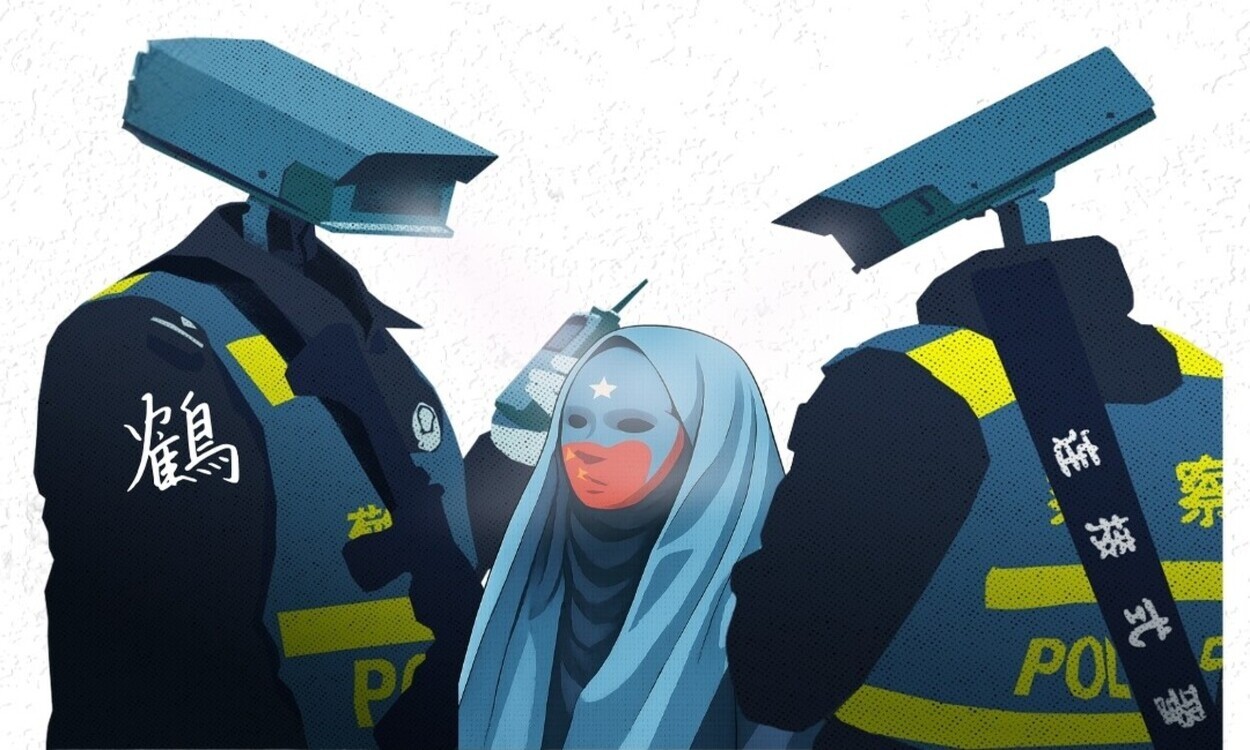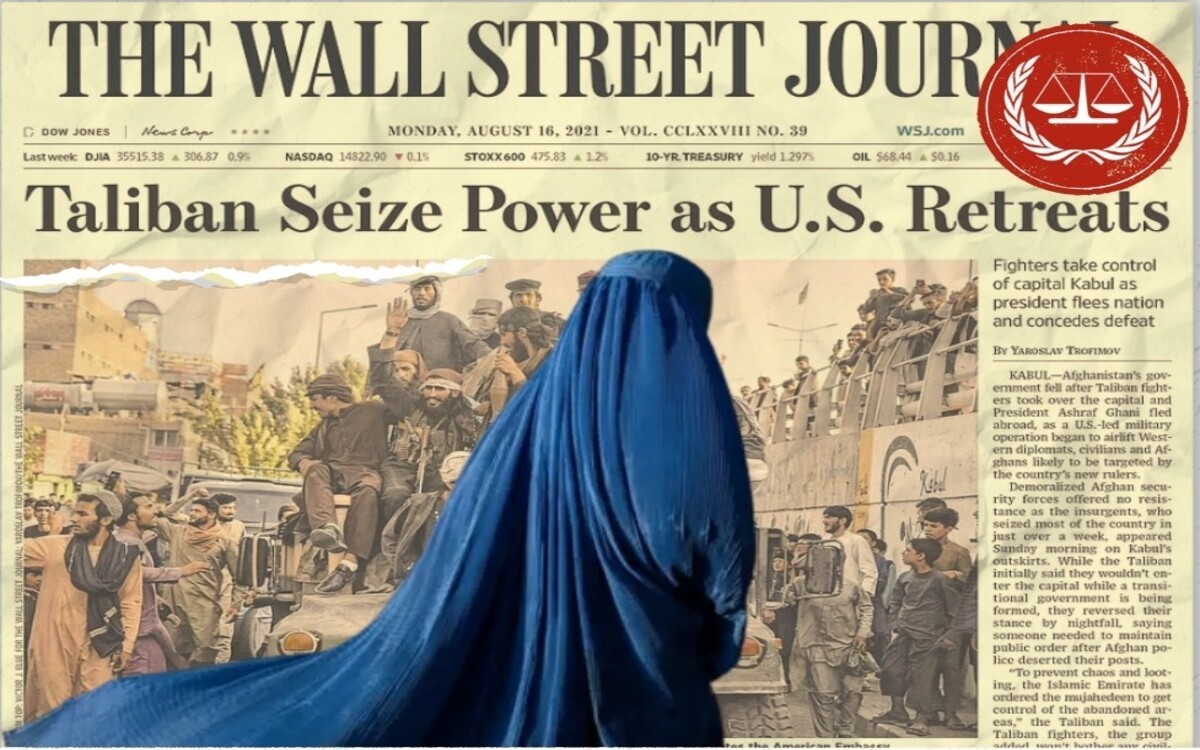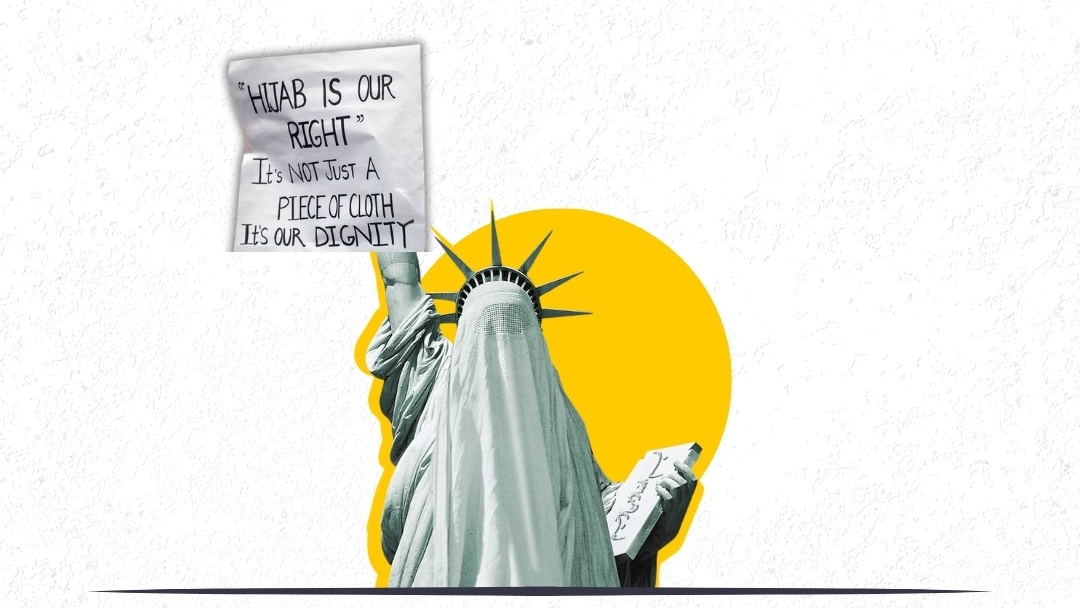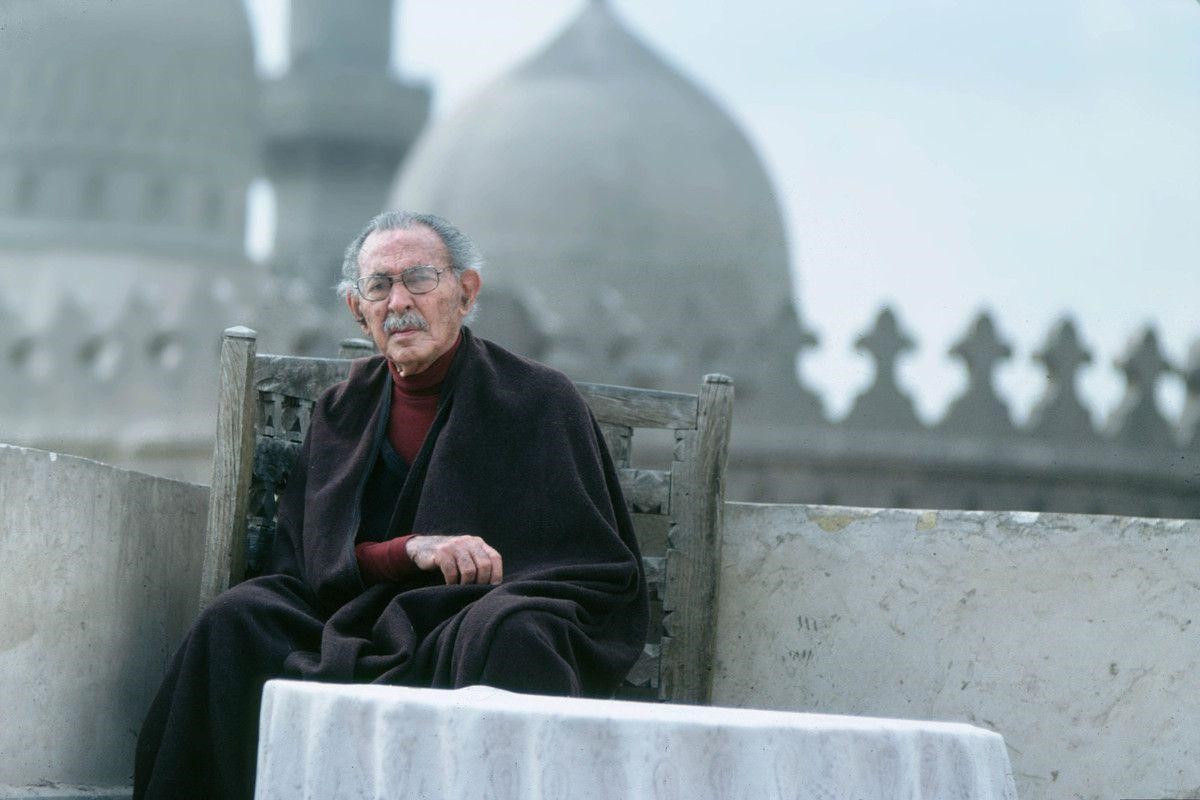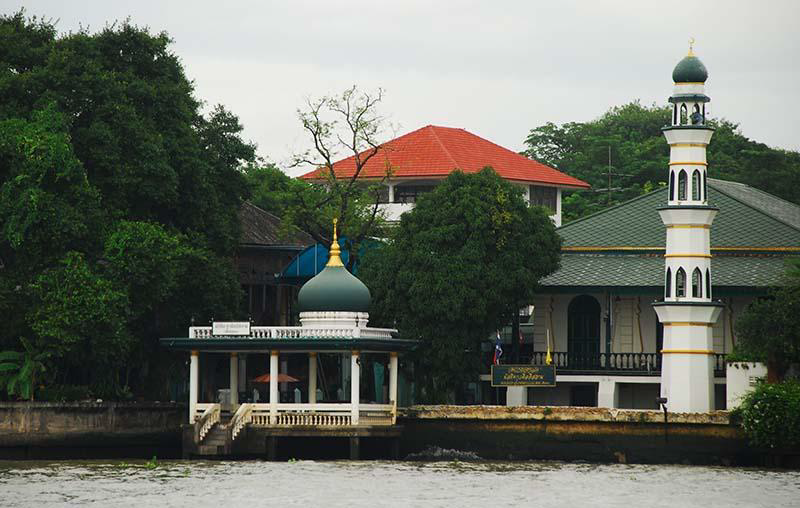
Contemplating Islam in a Non-Muslim Society: Islam and Muslims in Japan
The following article is based on Dr. Qayyim Naoki Yamamoto’s lecture, Muslim Scholars in Japan: Contemplating Islam in a Non-Muslim Society. It comes from part one of a three-part lecture series entitled ‘East Asia and Islam: Present, Past, and Future’ at the Centre for Asian and Middle Eastern Studies (CAMES). The transcript has been shortened and edited for better flow along with some additional commentary by Dr. Yamamoto.
I suspect most people don't know much about Islamic history in East Asia but East Asia is an interesting region because one of oldest masjids, that was built in the 7th or 8th century, is in present day China. However, the first masjid built in Japan by foreign Muslims during the 20th century and mostly supported by Tatar, Turkish and South Asian Muslims (You can see a South Asian flavor in the architecture) was the Kobe Masjid. Japan has one of the newest Muslim communities in history. So East Asia has both what is among the oldest Islamic traditions established by a non-Arabs, and also a country like Japan with a rather new Muslim community.
I use the term ‘East Asia’ but few of us identify ourselves as East Asian. Once, we were part of the same civilization, but after the rise of nation-states, our identities were scattered. This is just a constructed social reality. Even Muslims, the people who are supposed to have one shared identity as an ummah, cannot work together in a proper way. Additionally, we try to divide some area studies in terms of the reference region i.e. Islam in Japan, Islam in Korea, Islam in Vietnam, and so on. But, what is important is how even when we’re trying to study about Islam in East Asia, we can reconstruct our identity and try to use this heritage to create one shared identity.
The contents of the series are as follows: first, I will focus on Muslim scholars in Japan; second, the possibility of creating a Japanese Islamic culture in the future; and third about the culture or intellectual heritage of the Muslims that live in East Asia.
Some research exists about Islam in Japan, but most of these studies focus on Islam and Japanese Muslims during the Meiji period in the 20th century (the age of modernization). There is actually a huge gap between the Japanese Muslims in the Meiji period and Japanese Muslims living in the 21st century. This is because Japanese Muslims after the end of the second world war, in most cases, were created by the colonial policy of the Japanese government. Some claim that those Japanese Muslims were actually fake. The government tried to send those Japanese to countries such as China and in Southeast Asia, to try to collect information about Muslims to help the Japanese empire colonize those places.
General Picture of Muslims in Japan
There are approximately two hundred thousand Muslims living in Japan. Most of them are Muslim foreigners who come to Japan for a short time, the majority of whom are Bangladeshi, Pakistani, and Indonesian. Unfortunately, there are no accurate statistics on the number of Japanese Muslims. Most Japanese Muslims are those who became Muslim through marriage with Muslim foreigners living in Japan. Most Japanese converts are female; male Japanese converts are rare, possibly less than one thousand. Additionally, we have second and third generation Muslims, meaning Muslims that have parents of a Pakistani or Bangladeshi origin, who are also quite active right now in the masajid or Islamic cultural centres in Japan.
We also have an institute called the Association for Japanese Muslims (Nihon Muslim Kyokai). This Association is not that big, but is working to help Japanese Muslim converts in Japan. The people who are running this institute are mainly the Japanese Muslims who studied at Al Azhar University or different universities in Saudi Arabia.
We must not forget that the interaction between Japan and the Muslim World began 150 years ago. Our history is relatively new. If you look at the history of Islamization, after a land has entered the Islamic ruling system, it usually takes at least 400 years for a majority of the inhabitants of that land to become Muslim. Japan is a non-Muslim country, and the history of Islam here is relatively new. Our history has just started, and this yet is not a stage of Islamization. Some Japanese have just started to accept Islam as a worldview.
There are three phases in the process of vernacularization of Islam: identification, translation, and articulation. The first phase, identification, means that in this generation, people just acquire an identity as a Muslim. They may start to practice Islam, but they do not have high literacy of Islamic classics, classical Arabic grammar, fiqh, tasawwuf, etc. They just embrace Islam and acquire a Muslim identity.
It’s after the first couple hundred years that that those Muslim communities start to translate Islamic classics to study more. This is the second phase, translation. In the case of China, only the Muslim elite were able to read Arabic or the Persian texts, and those people traveled to Arabian regions or Central Asia and brought back the Islamic classics. They then started to translate Islamic classics into their vernacular language. When it comes to Japan, I think the translation phase has just started.
Translation is when the major classics that constitute Islam's intellectual heritage are translated into the local language. After that we can move to the third phase, articulation. Articulation refers to acquiring the intellectual ability to articulate the Islamic values or the concepts in the vernacular language. Articulation is a stage in which the local Islamic culture becomes a manifestation of its ideals, not only in literature, but also in songs, architecture, food, and many other aspects. This three-stage process is something that is fostered in a society over a period of several hundred years.
There are several stages and we need to respect this process. The Japanese Muslim community is now in the second phase and some of them are now reaching the stage of articulation, but what I always want to emphasize is that we need to wait and cherish this process. Maybe in one or two thousand years, a Japanese Ghazali might appear, but we need to show patience in this process.
Islamic Scholarship in Japan
There were some Japanese Muslims during the imperial period and second world war, but most of them were educated and created by the Japanese colonial policies. It therefore is really difficult to identify if they were sincere Muslims or not, but there are works and inquiries written by them, such as Hajj records or travelogues of the Middle East and China. One Japanese Muslim, Tanaka Ipei, wrote a Japanese translation of the works of Chinese Muslim scholars, such as a Japanese translation of a Chinese seerat an-nabawiyyah. Tanaka also argued about the affinity of Japanese nationalism or shintoism with Islam.
I have read most of their works, but have found them problematic. For example, some of the Japanese Muslims talked about how respecting the Japanese empire will never conflict with respecting Allah, and tries to explain this as a theological argument. However, these arguments do not reach the academic level and should be regarded only as political propaganda.
Right now, we have translations of the Qur’an and some hadith collections (Sahih Bukhari and Muslim). We have several hundred, maybe thousand, books on Islam on topics like the concept of Allah, prophethood, and the meaning of ibadah, etc. However, these are very basic books, with no depth of content. Some Japanese Muslim professors and intellectuals have also started to translate books of Islamic aqīdah, fiqh, kalam, etc.
Japanese Scholars in Japan
Muslim intellectuals have a variety of educational backgrounds. For example, Shaykh Saeed Satou currently works at the Association for Japanese Muslims and at the Arab Islamic Cultural Center, which is affiliated with the Saudi Arabia embassy. He studied in Mauritania and Saudi Arabia, and has also translated the Holy Qur’an into Japanese. Shaykh Ibrahim Sawada works at the Iranian Embassy and got his education in Iran. He’s a rare Japanese shi’a Muslim. With the embassy’s support, lots of Japanese Muslims attend Al-Mustafa International University in Iran. Shaykh Ibrahim also translated the Qur’an.
There is also an institution, Tokyo Camii (mosque), run by Turkiye’s Diyanet. Tokyo Jamii is one of the most popular tourist places in Tokyo as well and holds a range of attractive cultural activities. It also offers Qur’anic and Islamic courses, and has also worked on Japanese translation of the Qur’an.
The Iranian embassy, Saudi embassy, and Tokyo Jamii have published their own Japanese translations of Quran. This is really confusing if thought from the perspective of a non-Muslim Japanese who is interested in studying Islam. When they searches on Google, they will find three different translations - one supported by Saudi, other by Iran, and yet another by Turkiye.
Shaykh Ahmad Maeno is a scholar active in Islamic education. He got his traditional education from Syria. What I respect most is his focus on child education. He organizes Sunday classes and courses for non-muslim Japanese audiences in universities, and teaches tajwid to children. Shaykh Ahmad Maeno has a vision and understands the importance of investing in the young generation.
Another scholar is Hassan Nakata Ko, who has a Ph.D. from Cairo University with a specialisation in Ibn Taymiyyah’s political thought. He works as a professor at Yamagushi University and Doshisha University, one of the most famous universities in Kyoto, the ex-capital of Japan. Professor Hassan is a really sincere Muslim who loves his students. Most of the leading Japanese Muslim intellectuals who live in Japan are actually students of Professor Hassan. He also translated Qur’an into Japanese and his translation was published by Sakuhinsha, a major publisher. His contributions include the translation of Ibn Taymiyyah’s work that focuses on political philosophy as well as some hanbali fiqh works into Japanese. Another important work is his ‘What is Sharia’, one of the first books in Japanese that explains the philosophy of shari’a in a holistic manner.
He also studied tasawwuf under the Turkish shaykh, Shaykh Nazim. In this sense, Professor Hassan is a really interesting figure compared to other Japanese intellectuals, because usually Japanese Muslim scholars only have one background. Professor Hassan studied in Cairo and also gained a naqshbandi tasawwuf education with a Turkish Shaykh.
Not only does he have a lot of connections among Muslims in Japan, he is also quite famous in the Japanese Academia in general. For example, he’s been interviewed by Professor Uchida Tatsuru, one of the leading philosophers in Japan and specialist in French literature, to explain the vision of Islam and discuss the problems of Japanese society. Before Professor Hassan, Islam or Muslim sounded exotic to the general public, thanks to him, the Islamic discourse has now started to strengthen in the Japanese society. The great thing about him is that he does not just address the Japanese Muslims but also to the general public. One of his latest books is ‘How to Conquer the World’, an educational introduction to teenagers. ‘Conquer’ here doesn’t mean in a military sense, but how to conquer one’s nafs and keep the living balance in the soul. This book is targeted towards teenagers in Japan who feel social pressure or stress that Professor Hassan has tried to answer from the Islamic perspective.
His wife, Shaykha Khalwa Kaori Nakata, also has tremendous contributions to Japanese Muslim society. She is considered the first Japanese 'Alima in the history of Japan. She established a Muslim newspaper in the 80s; before that we didn’t have a strong medium to connect all the Japanese Muslims. She also translated Tafsir Al-Jalalayn, which is, as far as I know, the first translated tafsir into Japanese. She wrote on sirah nabiyya, tasawwuf, and also encouraged Japanese female Muslim to practice Islam, for example wearing hijab. There are some Muslims who are scared to reveal their Muslim identity however she says that being Muslim is a source of pride and practicing Islam makes us more perfect.
The last Japanese scholar I want to introduce is Mujahid Matsuyama Yohei, who also is a student of Professor Hassan and Shaykha Kaori. He is now a leading Japanese Muslim intellectual with expertise in ‘ilm al-kalam and fiqh. Before him, the focus was only on translating Islamic classics as much as possible, however Japanese Muslims have now started to understand the situation that we are living in, thanks to his work. He has authored a lot of books to guide the community about living in Japan as a Muslim minority.
However, he’s not just a specialist on Muslim minority, but is also one of the best scholars in Japan in classical theology. He translated Aqida al-Nasafiyya in 2016, with his commentary (Aqida al-Nasafiyya is a short aqīdah text that covers essential Islamic creed). His sharh (commentary) is spread over more than 500 pages. Many people think that there is no Islamic scholarship or Islamic tradition in Japan but the existence of individuals like Professor Mujahid who can author the commentary of Aqida al-Nasafiyya, is enough to refute this claim. Look at the situation in other non-Musim countries, I don’t think there are many Muslim intellectuals who can author a 500 page-commentary on Aqida al-Nasafiyya there.
Conclusion
The first phase of identification is now accomplished, and now we are in the phase of translation. There are some Japanese scholars who got education from Middle Eastern countries, South Asia, or Indonesia and Malaysia, and are now trying to bring those Islamic works to Japan. Furthermore, like Nakata Sensei or Mujahid Sensei, there are several Japanese scholars who have entered the stage of articulation. They are well-versed and well-informed in Islamic civilization and now trying to convey this message in the vernacular language, Japanese. In this sense I am quite optimistic about the future of the Japanese Muslim society.
I think if there's any problem in the Japanese Society, it is the dearth of female scholars. Shaykha Kaori was an amazing scholar but unfortunately passed away 14 years ago. After Kaori sensei, we don't have any influential female Japanese Muslims scholars. This is a challenge for Japanese Muslims to invest in education so more Japanese alima’ may appear and contribute to Japanese society.
Naoki Yamamato
1989 yılında Japonya‘nın Okayama şehrinde doğan Dr. Naoki Qayyim Yamamoto, Doshisha Üniversitesinde Hristiyanlık eğitimi aldı. Şu anda, İbn Haldun Üniversitesi Sakura Japonya Araştırmaları Merkezi Müdürü aynı zamanda Marmara Üniversitesi Türkiyat Ara...
 Naoki Yamamato
Naoki Yamamato